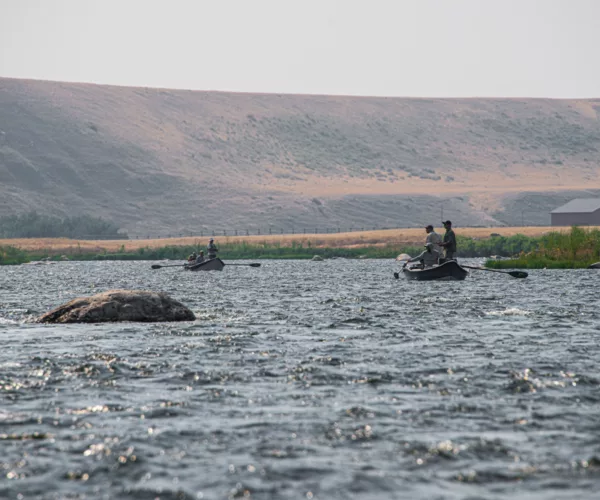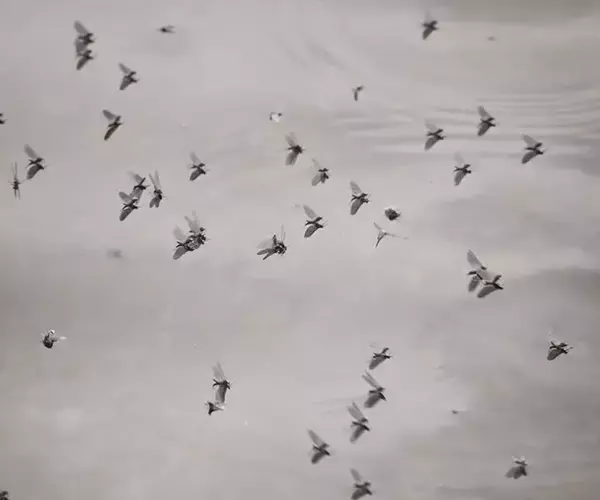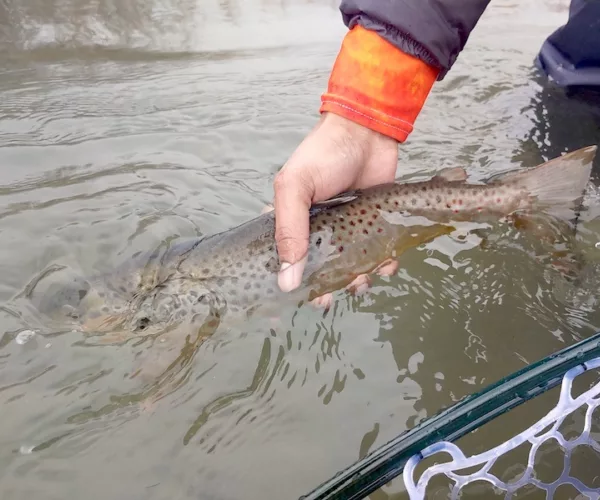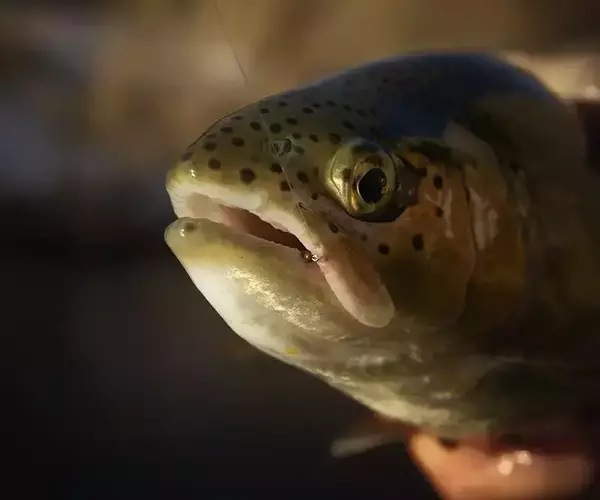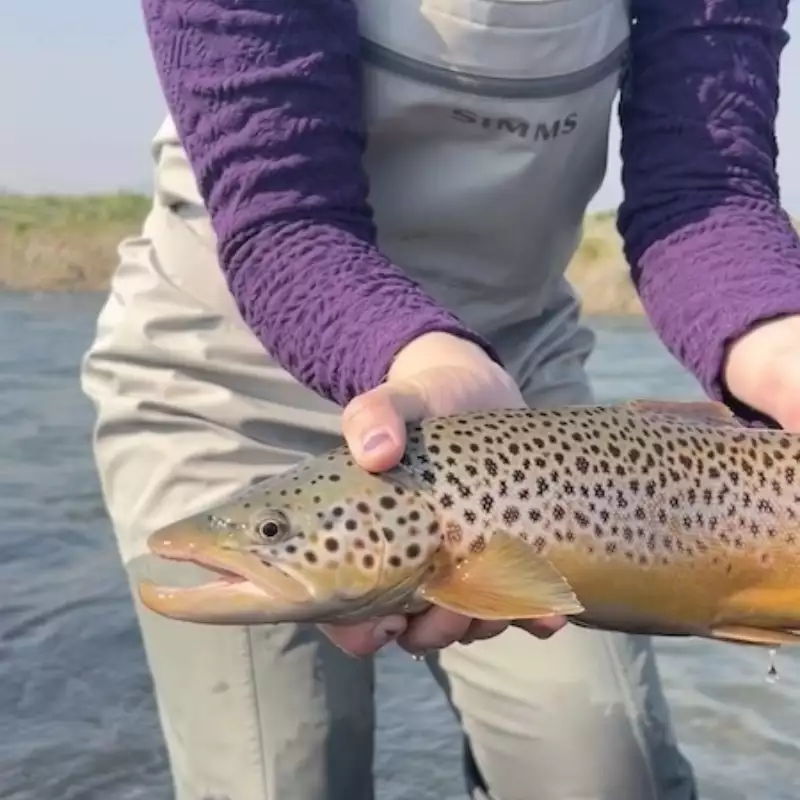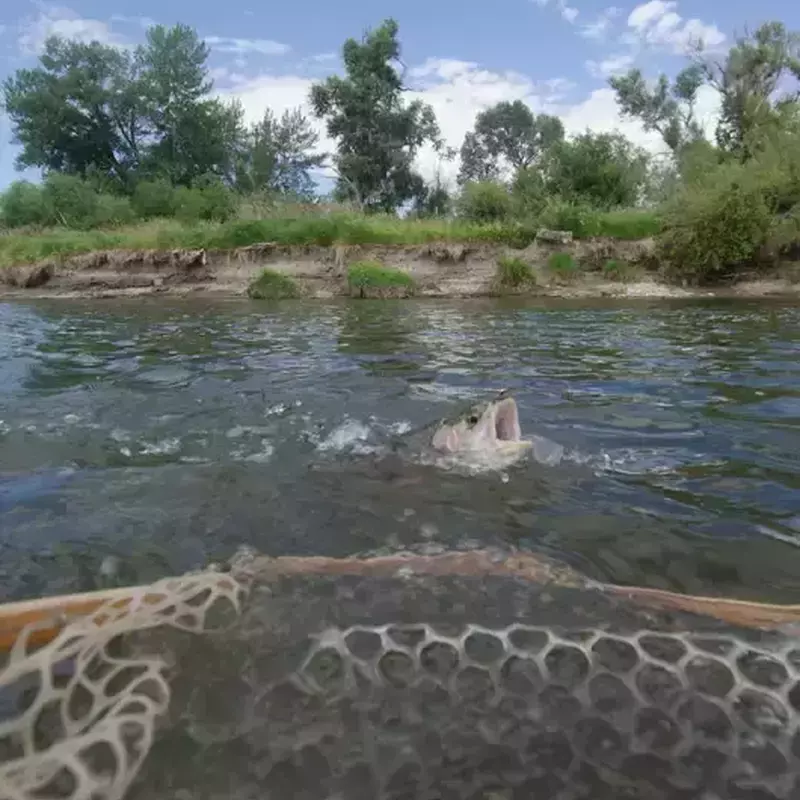Fish Small Flies on Big Montana Rivers in the Fall
Posted by: Alex
Date: 10/08/2025
Fall brings some of the most technical and rewarding Bozeman fly fishing of the year. When trout focus on midges and baetis, small flies fished patiently in big water can turn slow days into steady ones across Montana’s rivers.
Fishing Small Flies in Big Water, Bozeman Fly Fishing in the Fall
When it comes to fly fishing Bozeman in the fall, it’s easy to think about streamers and big brown trout. But just as important are the small flies that keep fish feeding through the colder months. On Montana’s larger rivers like the Yellowstone, Upper and Lower Madison, and Gallatin, trout settle into deeper, slower water and focus on midges and baetis. These bugs might be tiny, but they keep the fishing going throughout the later months of the year.
Why Small Flies Matter in Fall
When water temperatures drop, trout don’t want to move far for food. They sit in softer water where energy use is low, and they key in on smaller bugs that are easy to eat. Fall hatches of blue-winged olives and midges are steady through October and November across much of southwest Montana. Even though the flies are small, trout can get selective this time of year, especially on sunny, calm days. Matching their size and keeping your presentation clean makes all the difference.
Fishing small flies in big water is about patience. You might not get many takes, but each one feels earned. Smaller patterns also let you fish lighter tippet, which can help when trout are hesitant in the lower, clear water that fall brings. On all of our Bozeman area rivers, where flows spread out, the challenge is getting the right drift through slow seams and deep runs.
Reading Big Water
Montana fly fishing in the fall often means fishing big rivers that look intimidating at first glance. Breaking them down into smaller sections is key. Look for inside bends, tailouts, and the softer seams that form just off the main current. Trout won’t be sitting in the fast water like where we often find them willing to eat large terrestrials in the summer months. They’ll be tucked lower in the river, waiting for bugs to drift by.
Don’t rush. Instead of moving after a few drifts, work a single seam or bucket carefully. Fish often take small flies after repeated perfect drifts rather than the first one. A good rule in the fall is to slow everything down, your cast, your mend, and your expectations.
Fly Choices and Setup
A standard 9-foot tapered 4x leader is a solid all-around starting point for fall fishing. Add a small attractor nymph like a Pheasant Tail or Hare’s Ear in size 16–18 with 2 feet of 5x fluorocarbon to a smaller baetis or midge pattern in size 18-20 to build out a productive, small nymph searching rig.
Carrying a dry fly rod is never a bad idea, whether it sits in the car or is stowed in the boat. When bugs start to hatch, having an extra rod handy will save you time. Tiny Parachute Adams, Baetis patterns, or simple midges can get eats when fish rise in back eddies or along slower edges. Fish these on longer leaders of tapered 4x or 5x mono. One of the most enjoyable and technical aspects of fly fishing fall hatches is that fishing smaller flies on lighter tippet makes for a much meaningful connection with the fish. It's where planning and execution come together, leaving a much smaller margin for error.
Fishing small flies in big water isn’t flashy, but it’s some of the most consistent action you can find late in the season. The takes might be subtle, but the fish are healthy and strong from a summer of feeding. Bozeman fly fishing in the fall often means fewer people, cooler air, and trout that still look for a reason to eat. If you’re patient and fish carefully, small flies will outproduce most other patterns this time of year.
Pro Tip
Our Montana fly fishing guides: focus on timing. The warmest part of the day—usually mid-afternoon—brings the most activity in fall. If you see a few rises or notice bugs drifting in the film, stay put. Changing flies or running the same seam a few more times can make all the difference.

